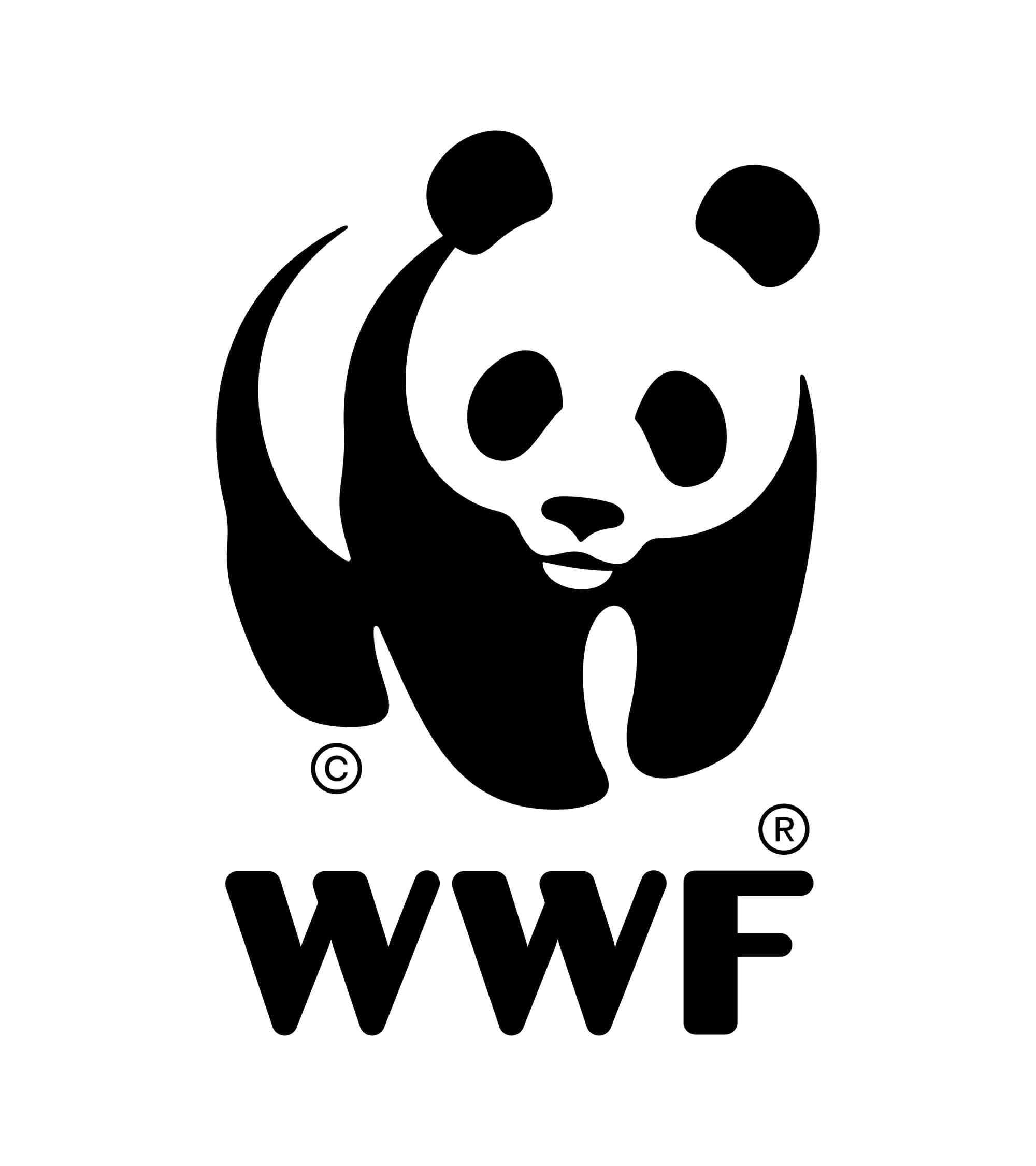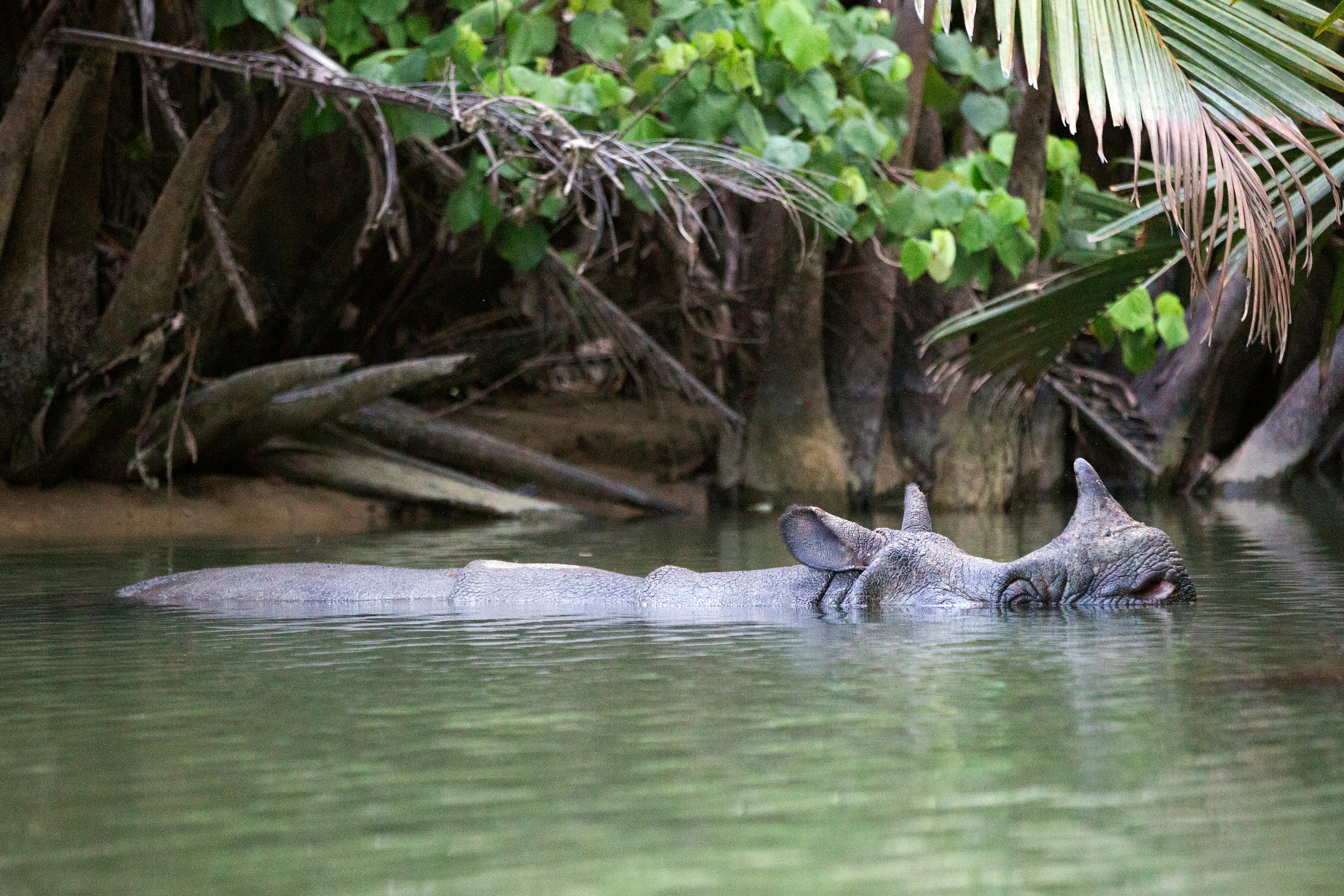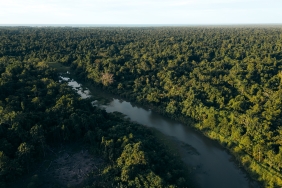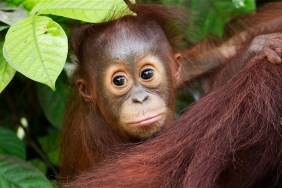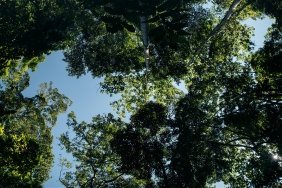WWF & IRF DONATED 120 VIDEO CAMERA TRAPS FOR JAVAN RHINO CONSERVATION IN UJUNG KULON
Jakarta – WWF and International Rhino Foundation (IRF) donated 120 units of video camera traps for conservation of Jjavan rhino (Rhinoceros sondaicus sondaicus) in Ujung Kulon National Park, Indonesia. These cameras will add the total of 160 cameras owned and operated by Ujung Kulon National Park Office. The need to have additional video cameras for rhino observation was first recognized duringIUCN AsRSG (Asian Rhino Specialist Group) Meeting at Cisarua, West Java on March 2012. In that meeting, the Head of Ujung Kulon National Park Office presented the result of javan rhino identification in 2011 using video camera traps and recognized the need of additional cameras.
Since 1990s, WWF has been working with Ujung Kulon National Park Office to observe javan rhino population using camera traps. At that time it was the first ever in Indonesia to identify wildlife, in this case javan rhino, using still photo camera traps. On 2008, video camera traps replaced the photo camera traps. Ujung Kulon National Park Office has officially been using video camera traps to count javan rhino population and managed to identify 35 individuals of javan rhino comprising 22 males and 13 females since 2011.
IRF Director, Susie Ellis said,”The Javan rhino population in Ujung Kulon is the last hope for Javan rhinos now that the species has been lost from Vietnam in 2011. Additional video traps will allow us to mor fully document the rhino’s distribution and habits - an important step for ensuring their survival.”
WWF-Indonesia Coordinator of Rhino Conservation Program, Adhi Hariyadi acknowledged these additional cameras will increase the accuracy of information basis of javan rhino in Ujung Kulon. “By integrating video information gathered from camera trap with DNA based monitoring, we can get better description of the Javan rhino population, or even get deeper understanding of rhino behaviors,” Adhi added.
Head of Ujung Kulon National Park Office, Moh. Haryono said,”With the total of 160 video camera traps placed simultanously around the park, we can collect various information, not only on Javan rhino but also other wildlife. The video can even monitor human activities inside Javan rhino habitat in Ujung Kulon. This information serves as an important basis for monitoring the increase Javan rhino population in Ujung Kulon, which is in line with Indonesia Rhino Conservation Strategy and Action Plan.”
Nation-wide, the Ministry of Forestry has set up targets to increase population of 14 endangered species by 3 percent by 2014. The achievement of this target will be measured by what so-called Primary Work Indicator, a guideline developed by Directorate General of Forest Protection and Nature Conservation (PHKA) of the Ministry of Forestry. Currently a roadmap is being developed to provide systematic guideline for all stakeholders to participate.
Biodiversity Conservation Director at the Ministry of Forestry, Novianto Bambang Wawandono added, “One of primary activities developed by the Ministry of Forestry to achieve this target is to monitor population of specific species such as Javan rhino in its in situ habitat. These 120 additional units of video cameras will help us to reach our target of increasing the Javan rhino population by 3 percent.”
#######
Note for editors:
- Javan Rhino (Rhinoceros sondaicus) is one of the rarest rhino species in the world with population less than 60 individuals in the wild. There were 3 subspecies of javan rhinos: Rhinoceros sondaicus inermis in Myanmar, Rhinoceros sondaicus annamiticus in Vietnam and Rhinoceros sondaicus sondaicus in Ujung Kulon National Park, Indonesia. Javan rhinos were extinct in Myanmar and Vietnam.
- Ujung Kulon National Park is one of the first 5 national parks established in Indonesia by Ministry of Forestry Decree No. 284/Kpts-II/1992 on 26 February 1992 with total 122.956 ha, comprising 78.619 ha of land area and 44.337 ha of marine area. Visit: http://www.ujungkulon.org/
- WWF is one of the biggest conservation organization in the world with network offices in more than 100 countries in the world. Javan rhino conservation in Ujung Kulon is one of WWF’s first field program in Indonesia since 1962. visit: http://www.wwf.or.id/
- IRF is a rhino conservation funding organization based in the United States of America. This organization supports rhino conservation programs in Africa and Asia. http://www.rhinos-irf.org/
- IUCN AsRSG is a unit in IUCN World Conservation Union, a world’s conservation network. AsRSG is part of Species Survival Commission under IUCN who gives recommendations that influence rhino conservation program in the world.
For further information, please contact:
- Novianto Bambang W, Director of Biodiversity Conservation of Directorate General of Forest Protection and Nature Conservation, Ministry of Forestry, n.bambang_ww@yahoo.com
- Moh. Haryono, Head of Ujung Kulon National Park Office, moh_haryono@yahoo.co.id
- Adhi Hariyadi, WWF-Indonesia Rhino Conservation Program Coordinator, ahariyadi@wwf.or.id
